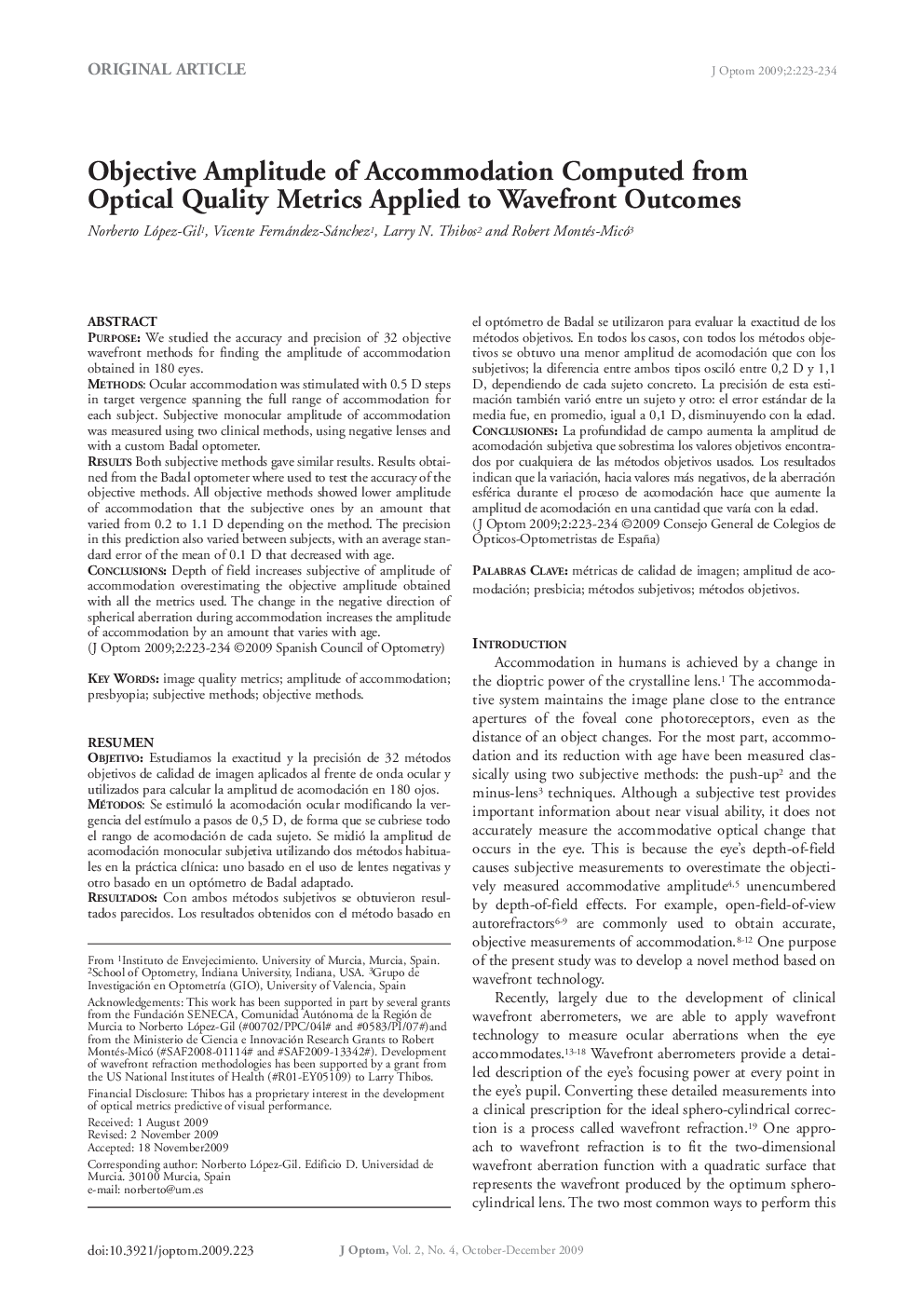| کد مقاله | کد نشریه | سال انتشار | مقاله انگلیسی | نسخه تمام متن |
|---|---|---|---|---|
| 2698720 | 1144060 | 2009 | 12 صفحه PDF | دانلود رایگان |

PurposeWe studied the accuracy and precision of 32 objective wavefront methods for finding the amplitude of accommodation obtained in 180 eyes.MethodsOcular accommodation was stimulated with 0.5 D steps in target vergence spanning the full range of accommodation for each subject. Subjective monocular amplitude of accommodation was measured using two clinical methods, using negative lenses and with a custom Badal optometer.ResultsBoth subjective methods gave similar results. Results obtained from the Badal optometer where used to test the accuracy of the objective methods. All objective methods showed lower amplitude of accommodation that the subjective ones by an amount that varied from 0.2 to 1.1 D depending on the method. The precision in this prediction also varied between subjects, with an average standard error of the mean of 0.1 D that decreased with age.ConclusionsDepth of field increases subjective of amplitude of accommodation overestimating the objective amplitude obtained with all the metrics used. The change in the negative direction of spherical aberration during accommodation increases the amplitude of accommodation by an amount that varies with age.
ResumenObjetivoEstudiamos la exactitud y la precisión de 32 métodos objetivos de calidad de imagen aplicados al frente de onda ocular y utilizados para calcular la amplitud de acomodación en 180 ojos.MétodosSe estimuló la acomodación ocular modificando la vergencia del estímulo a pasos de 0,5 D, de forma que se cubriese todo el rango de acomodación de cada sujeto. Se midió la amplitud de acomodación monocular subjetiva utilizando dos métodos habituales en la práctica clínica: uno basado en el uso de lentes negativas y otro basado en un optómetro de Badal adaptado.ResultadosCon ambos métodos subjetivos se obtuvieron resultados parecidos. Los resultados obtenidos con el método basado en el optómetro de Badal se utilizaron para evaluar la exactitud de los métodos objetivos. En todos los casos, con todos los métodos objetivos se obtuvo una menor amplitud de acomodación que con los subjetivos; la diferencia entre ambos tipos osciló entre 0,2 D y 1,1 D, dependiendo de cada sujeto concreto. La precisión de esta estimación también varió entre un sujeto y otro: el error estándar de la media fue, en promedio, igual a 0,1 D, disminuyendo con la edad.ConclusionesLa profundidad de campo aumenta la amplitud de acomodación subjetiva que sobrestima los valores objetivos encontrados por cualquiera de las métodos objetivos usados. Los resultados indican que la variación, hacia valores más negativos, de la aberración esférica durante el proceso de acomodación hace que aumente la amplitud de acomodación en una cantidad que varía con la edad.
Journal: Journal of Optometry - Volume 2, Issue 4, 2009, Pages 223–234